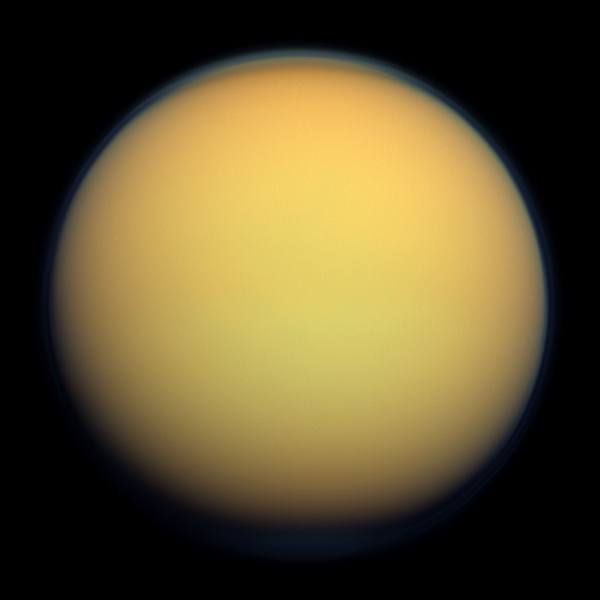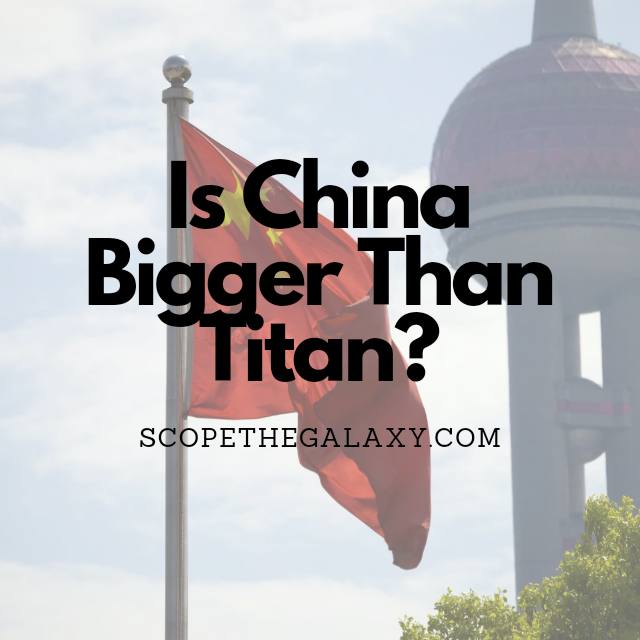*This post may contain affiliate links. This means we may make a commission if you purchase an item using one of our links*
China has a surface area of 9.7 million sq. kilometers and a volume of 462 mllion cubic kilometers while Titan is a spherical entity with a surface area of 83 million sq. kilometers and a volume of 71.6 billion cubic kilometers. It only makes sense that this moon would be bigger as it is spherical whilst China is a mostly flat land mass.
For a more detailed breakdown of what makes both Titan and China as big as they are continue reading as it will be discussed in more detail below.
How Big Is China?

China – officially named the People’s Republic of China – is the third largest country in the world and is located in East Asia. It is also the most populous country in the world, with a population of over 1.4 billion people.
China has a land area of 9,388,211 sq. km and a total area of 9,706,961 sq. km. The total area comprises not only the land mass but also the bodies of water (such as lakes and rivers). China has a diameter of 5,000 km stretching from east to west and a north-south length of 5,500 km.
One-third of China’s total land area comprises mountains, and it is home to the tallest peak in the world, Everest, which occupies the border between China and Nepal. Thanks to this mountainous terrain, the average thickness of China’s continental crust is 47.6 km (the average global thickness is 39.2km). This gives China an estimated volume of 462,051,344 cubic km.
The topography of China is varied and encompasses the highest and one of the lowest places on Earth, with climates that vary from dry desert to tropical monsoon. In fact, China has the greatest north-south temperature contrast of any country in the world.
China’s coastline runs for around 14,000km, while its land frontier extends to 20,000km to encompass its borders with 14 other countries, including Russia, Mongolia, India, and Kazakhstan. Generally speaking, China has a high west side and a low east side, meaning that many of its rivers flow eastward.
The vast expanse of this country covers almost five time zones, but China operates under a single time zone to unify the country.
How Big Is Titan?

Titan is the largest of Saturn’s moons and the second largest satellite in our solar system (following Jupiter’s moon Ganymede). It is the only moon in the Milky Way that has clouds and a planet-like atmosphere.
Titan has a diameter of 5,150 km and a surface area of 83,000,000 sq. km. While its width falls short of China’s grand expanse, Titan’s surface area is far more vast thanks to its spherical body. This surface area gives Titan an impressive volume of 71,600,000,000 cubic km.
This moon is so fascinating to scientists that they will launch the $1 billion drone “Dragonfly” to explore its surface. Titan has a thick atmosphere; because of this, the moon experiences a methane cycle of evaporation and condensation that creates rain, clouds, seas, and rivers. Other than Earth, Titan is the only body in the Milky Way that shows clear evidence of stable bodies of surface liquids.
The moon’s surface is one of the most Earth-like places in the Milky Way, though there are some vast differences. Firstly, the temperature is far, far colder, with an average surface temperature of −179.5 °C. And Titan’s gravity is only 14% of the Earth’s gravity, which means that a person weighing 100 kg on Earth will only weigh 14 kg on Titan.
Dutch astronomer Christiaan Huygens first discovered the moon in 1655 and named it Saturni Luna (Latin for “Saturn’s moon). It was in 1847 that English astronomer John Herschel suggested that the moon be renamed Titan from Greek mythology.
Scientists aren’t entirely sure about Titan’s origins but get some clues from its atmosphere. Instruments measuring the isotopes discovered that the ratio of Titan’s nitrogen isotope most closely resembles comets from the Oort Cloud – billions of icy bodies which orbit the Sun from a distance of 5,000 to 100,000 astronomical units.
This nitrogen ratio suggests that the moon was created from the same disc of dust and gas that formed the Sun.
Titan orbits at a distance of roughly 1.2 million kilometers from Saturn, a planet that is approximately 1.4 billion kilometers from the Sun. This vast distance means that sunlight takes around 80 minutes to reach Titan (compared to around eight minutes on Earth), and the light is 100 times fainter on this moon than we experience on Earth.
Summary
China may be the third largest country on Earth in regards to surface area but it doesn’t match up to Titan’s overall size whatsoever.
Whether it be surface area where Titan is around 8 times that of China’s and volume where Titan is 155 times that of China.

